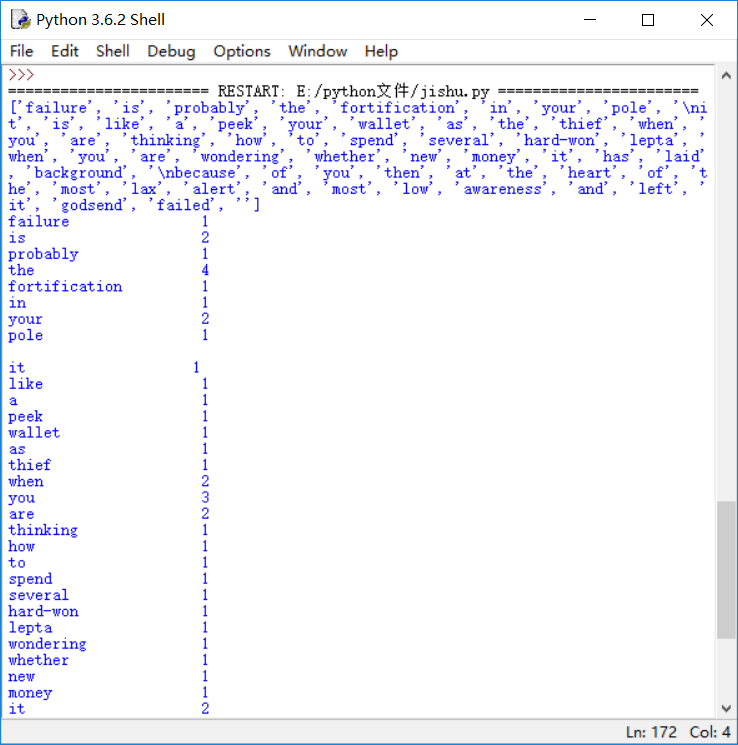组合数据类型练习,英文词频统计实例上
建立学生学号成绩字典,做增删改查遍历操作。
>>> d={'Michael':95,'Bob':75,'Tracy':85}
>>> d.get('Bob')
75
>>> d.pop('Bob')
75
>>> d
{'Michael': 95, 'Tracy': 85}
>>> d.values()
dict_values([95, 85])
>>> d.keys()
dict_keys(['Michael', 'Tracy'])
>>> d.items()
dict_items([('Michael', 95), ('Tracy', 85)])
>>> d1={'Bobi':100}
>>> d.update(d1)
>>> d
{'Michael': 95, 'Tracy': 85, 'Bobi': 100}
>>> d['Tracy']=90 >>> d {'Michael': 95, 'Tracy': 90, 'Bobi': 100}
列表元组字典集合的遍历
>>> ls=list('123456789') >>> tu=tuple('abcdefgfh') >>> ls ['1', '2', '3', '4', '5', '6', '7', '8', '9'] >>> tu ('a', 'b', 'c', 'd', 'e', 'f', 'g', 'f', 'h') >>> d=dict(zip(tu,ls)) >>> d {'a': '1', 'b': '2', 'c': '3', 'd': '4', 'e': '5', 'f': '8', 'g': '7', 'h': '9'} >>> for i in ls: print(i) 1 2 3 4 5 6 7 8 9 >>> for i in tu: print(i) a b c d e f g f h >>> for i in d: print(i,d[i]) a 1 b 2 c 3 d 4 e 5 f 8 g 7 h 9
>>> ss=set('123321456') >>> ss {'4', '1', '3', '5', '6', '2'} >>> for i in ss: print(i) 4 1 3 5 6 2 >>>
总结列表,元组,字典,集合的联系与区别。
(1)列表用方括号表示,随时可以增删查改。
(2)元组用圆括号表示。元组和列表的大部分操作相同。不同于元组初始后就不能更改。
(3)与列表和元组不同,集合是无序的,也不能通过索引进行访问。集合中的元素不能重复。
(4)字典用大括号表示。与集合相比,通过关键字索引,所以比集合访问更快。可用ls与tu
映射而成。
英文词频统计实例
- 待分析字符串
- 分解提取单词
- 大小写 txt.lower()
- 分隔符'.,:;?!-_’
- 单词列表
- 单词计数字典
word='''Failure is probably the fortification in your pole. It is like a peek your wallet as the thief,when you are thinking how to spend several hard-won lepta,when you are wondering whether new money,it has laid background. Because of you,then at the heart of the most lax,alert,and most low awareness,and left it godsend failed.''' word=word.lower() for i in ',.': word=word.replace(i,' ') words=word.split(' ') print(words) s=set(words) d={ } for i in words: d[i]=words.count(i) for i in d: print('{0:<20}{1:>3}'.format(i,d[i]))




